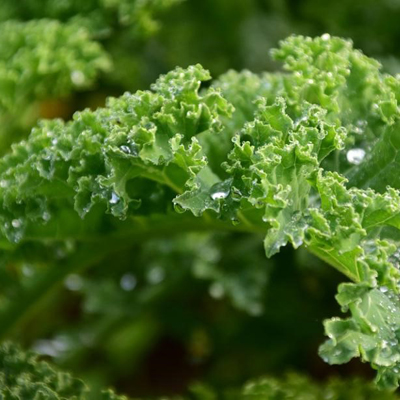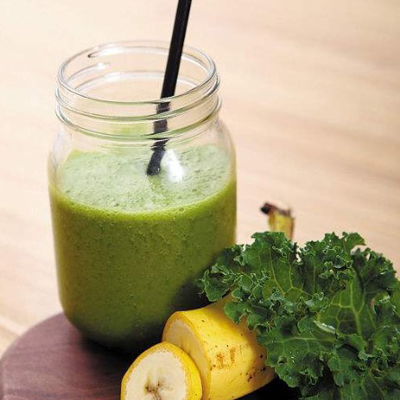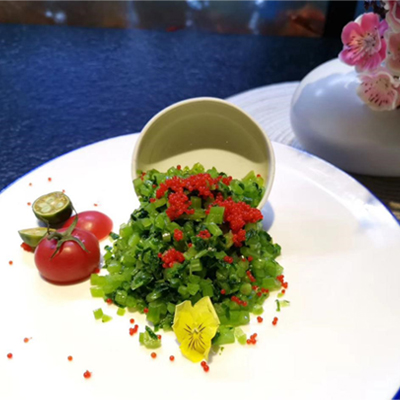A member of the cabbage family, kale comes in two forms: kale, which has smooth leaves, and curly kale, which has crinkly leaves. Curly kale is the most common of the two. Instead of forming a head, the leaves grow in a loose rosette at the top of a stem. The leaves are green, sometimes tinged with blue or purple, and their flavour is strong and distinct. It is one of the world's healthiest foods.

Nutrition
Kale is a green and leafy cruciferous vegetable that is rich in nutrients and fiber. The nutrients in kale can help boost wellbeing and prevent a range of health problems. It contains fiber, antioxidants, calcium, and vitamin K, among others.Even the chlorophyll in kale may have health benefits. It is also a good source of vitamin C and iron.
A cup of chopped, raw kale, weighing about 16 g contains:
A cup of chopped, raw kale, weighing about 16 g contains:
| CALORIES | 8 | PHOSPHORUS | 15 mg |
| PROTEIN | 0.68 g | POTASSIUM | 79 mg |
| CARBOHYDRATE | 1.4 g | SODIUM | 6 mg |
| FIBER | 0.6 g | VITAMIN C | 19.2 mg |
| CALCIUM | 24 mg | FOLATE DFE | 23 mcg |
| IRON | 0.24 mg | VITAMIN K | 112.8 mcg |
| MAGNESIUM | 8 mg | VITAMIN A, RAE | 80 mcg |
One cup of cooked kale has over 1,000 percent more vitamin C than a cup of cooked spinach. Unlike spinach, kale is low in oxalate, so the calcium and iron it provides are more easily absorbed by the human digestive system.

Availability
Kale is available all year round, but best from mid September to late February.
Kale grows well in the colder winter months, making a good addition when other fruits and vegetables are less readily available. Winter kale is usually better cooked, as colder weather can turn the sugars in kale into starch, increasing the bitterness and fiber content.
Kale grows well in the colder winter months, making a good addition when other fruits and vegetables are less readily available. Winter kale is usually better cooked, as colder weather can turn the sugars in kale into starch, increasing the bitterness and fiber content.

Serving suggestions
Kale can be enjoyed raw in salads or on sandwiches or wraps, steamed, braised, boiled or added to soups and casseroles.
In salads: When using kale raw in salads, massage the leaves by scrunching them briefly in the hands. This begins the breakdown of the cellulose in the leaves and helps release the nutrients for easier absorption.
As a side dish: Sauté fresh garlic and onions in extra-virgin olive oil until soft. Add kale and continue to sauté until desired tenderness. Alternatively, steam for 5 minutes, then drain and stir in a dash of soy sauce and tahini.
Kale chips: Remove the ribs from the kale and toss in extra-virgin olive oil or lightly spray and sprinkle with a combination of cumin, curry powder, chili powder, roasted red pepper flakes or garlic powder. Bake at 275 degrees Fahrenheit for 15 to 30 minutes to desired crispness.
Smoothies: In a food processor or a high-speed blender, add a handful of kale to your favorite smoothie. It will add nutrients without changing the flavor very much.
In salads: When using kale raw in salads, massage the leaves by scrunching them briefly in the hands. This begins the breakdown of the cellulose in the leaves and helps release the nutrients for easier absorption.
As a side dish: Sauté fresh garlic and onions in extra-virgin olive oil until soft. Add kale and continue to sauté until desired tenderness. Alternatively, steam for 5 minutes, then drain and stir in a dash of soy sauce and tahini.
Kale chips: Remove the ribs from the kale and toss in extra-virgin olive oil or lightly spray and sprinkle with a combination of cumin, curry powder, chili powder, roasted red pepper flakes or garlic powder. Bake at 275 degrees Fahrenheit for 15 to 30 minutes to desired crispness.
Smoothies: In a food processor or a high-speed blender, add a handful of kale to your favorite smoothie. It will add nutrients without changing the flavor very much.


